Triumph Hurricane
With Ian Falloon
Nowadays the factory custom is taken for granted as an integral part of mainstream motorcycling. Harley-Davidson has almost made it an art form, and nearly all other manufacturers have followed suit.
Yet it was BSA that pioneered this now successful concept, with Craig Vetter’s strikingly styled X75 Hurricane of 1973. Not only was the X75 the world’s first factory custom, it also influenced later mainstream motorcycle design.
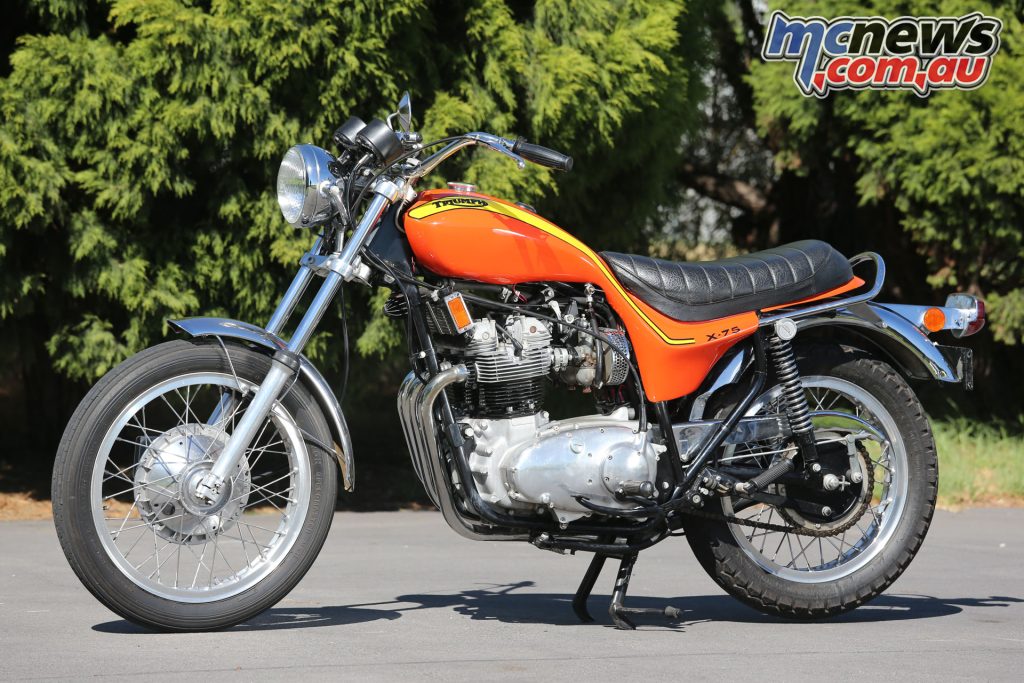
The X75 Hurricane grew out of the lukewarm response to the original BSA Rocket Three in America. This was considered ugly and overweight, and in 1969 BSA in the US approached a young designer and fibreglass manufacturer Craig Vetter to produce a prototype custom Rocket Three.
Vetter graduated in 1965 and began building aftermarket motorcycle fairings. By 1969 his company had 10 employees. There was already a growing interest in customised machines among young American motorcyclists and the directors of BSA in the US wanted something that evoked the lean US-specification Triumph Bonnevilles of the mid-1960s.
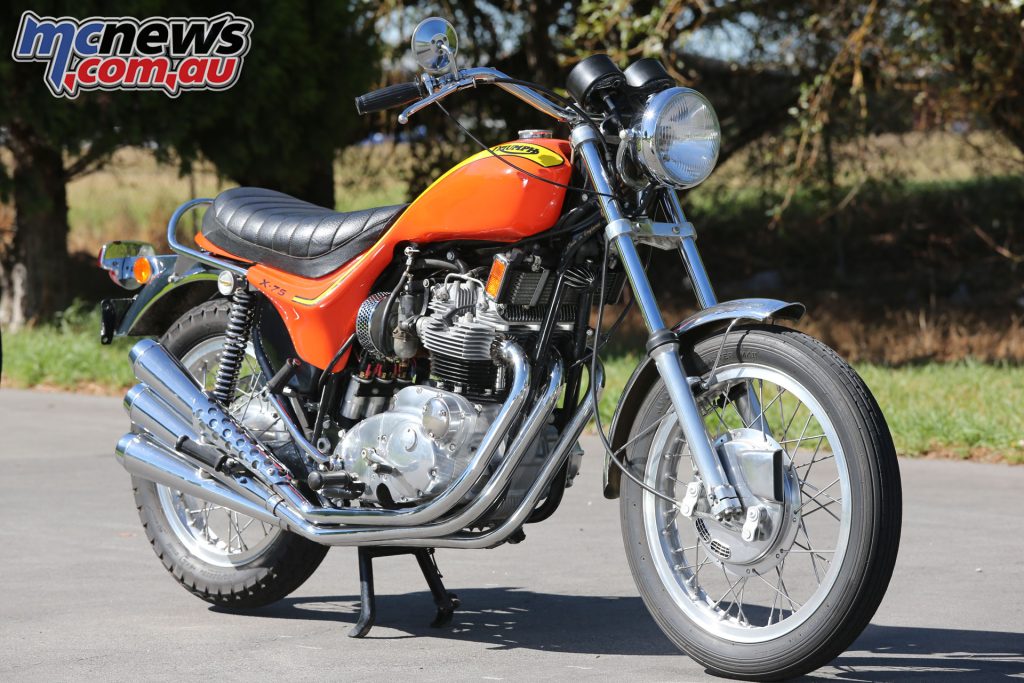
Vetter’s own philosophy was to contrast the age-old traditions of the British motorcycle industry with the American underground youth culture.
BSA in the UK knew nothing of the Hurricane project at first. Don Brown, director of the BSA GROUP’s eastern facility, BSA INC., in Nutley, N.J, conceived it. The project was financed out of office petty cash and kept secret from BSA Group management in England until it was completed.
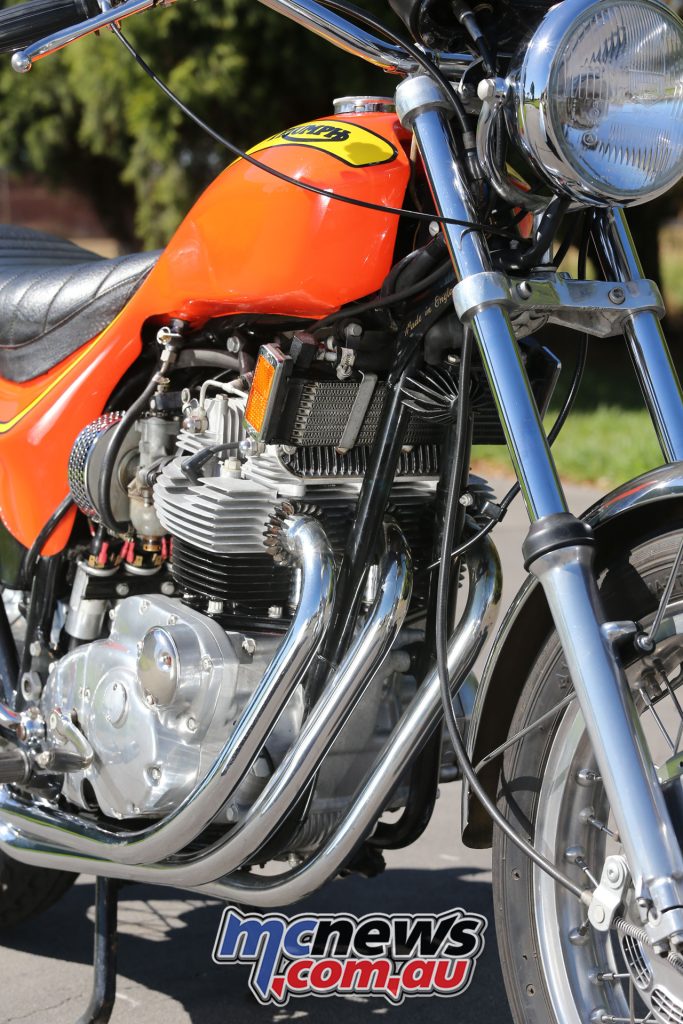
In April 1969, Brown called Vetter and offered to fly him to New Jersey to talk about the project. The meeting, on June 3, 1969, went well, and Vetter rode home to Illinois on a Rocket 3. Vetter set to work on a stock 750 cc BSA Rocket Three, creating a single curvaceous moulded fuel tank, seat and side panels.
Although the 67 x 70 mm three-cylinder engine was standard, Vetter modified the cylinder head by enlarging the fin area. This was done purely for aesthetic reasons, as were the black-painted cylinder barrels. With three 27 mm Amal concentric carburettors the engine was rated with 58 horsepower at 7250 rpm.
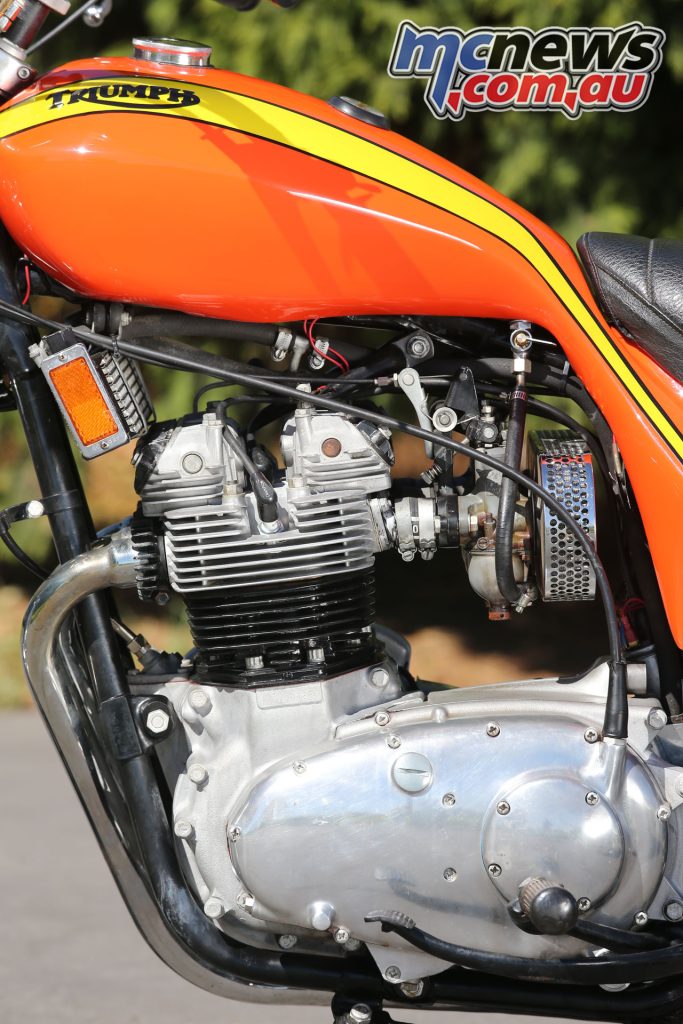
The distinctive triple silencers exiting on the right were derived from those of the Team BSA flat tracker. These may have worked well on left-turn ovals but they severely limited right-side ground clearance. Going for a lean look, Vetter installed separate instruments and a traditional chromed headlamp.
The gaitered forks also made way for cleaner Ceriani-style units, although these were later lengthened 50 mm by Pete Coleman at BSA in the UK. Painting the prototype in Camaro Hugger Red, Vetter had this up and running by September 1969.
Considering the precarious financial state of the BSA company at that time it was surprising that BSA executives approved a limited production run of the Vetter Rocket during 1971 to test the market. Brown resigned from BSA in 1970 and Vetter hadn’t even visited England at that stage.
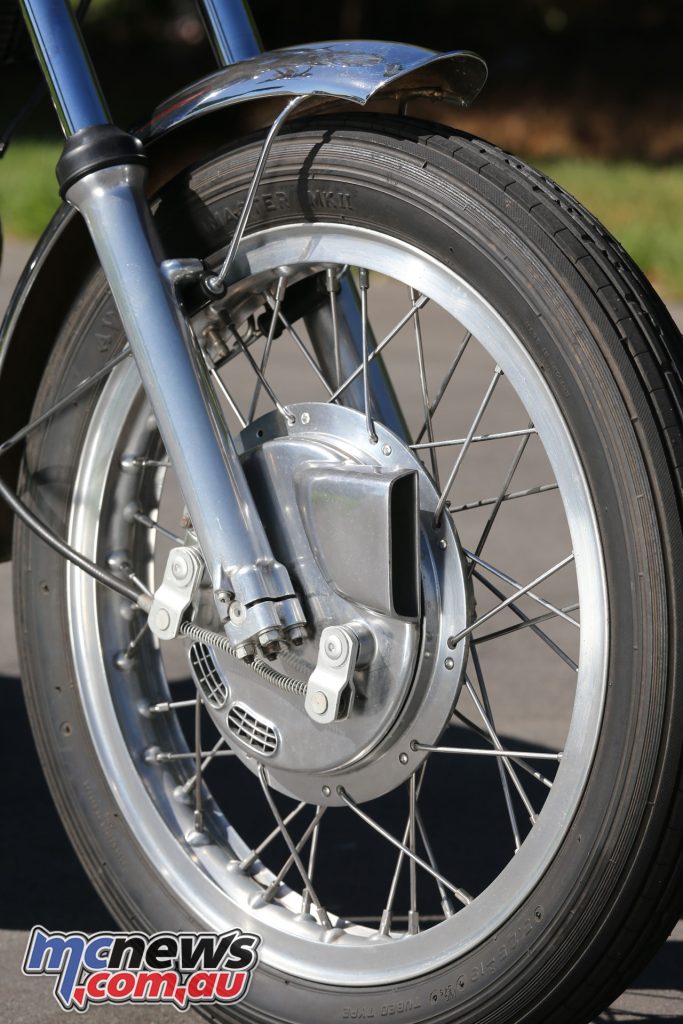
The transition from prototype to production machine required the one-piece tank and seat to be modified to incorporate a steel fuel cell within the fibreglass. What didn’t change was the tank shape, and the tiny nine litre fuel capacity. As the BSA engine was hardly noted for fuel frugality, the Hurricane was definitely not designed for long distance touring.
The Hurricane prototype was sent to England where it remained from Oct. 31, 1969, to June 1970, when it was shipped directly to Cycle World magazine in the U.S. However, poor management saw the entire Triumph and BSA line-up miss the 1971 US season and it wasn’t until late 1971 that the pre-production Vetter Rocket appeared.
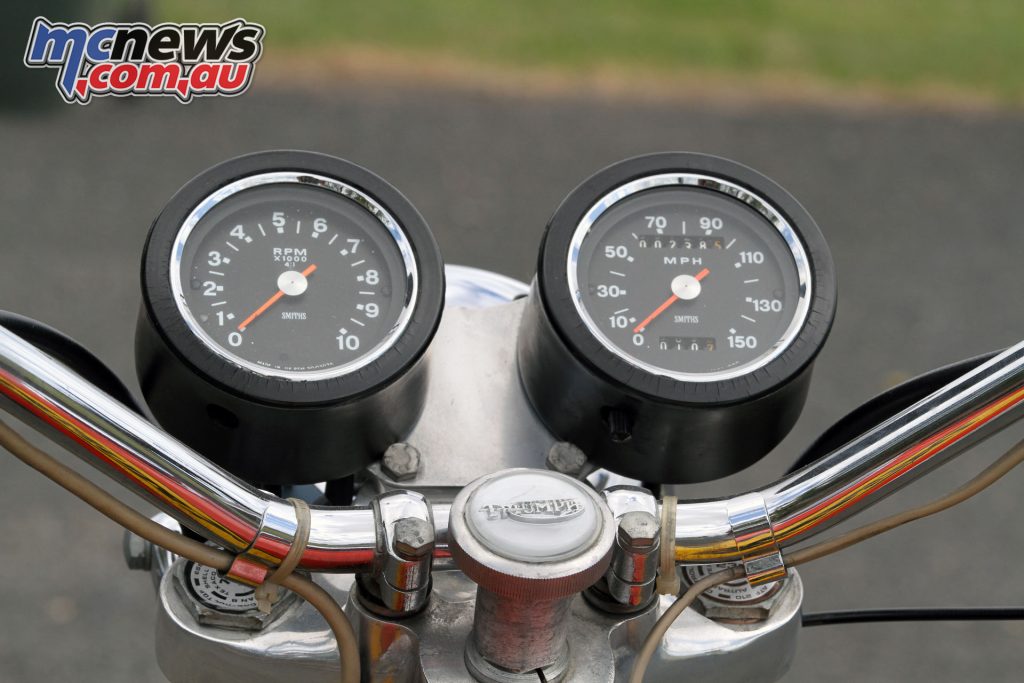
This was amazingly close in specification to the prototype, but for a conical hub twin leading shoe front brake from the A75 that year. The Vetter Rocket also received Borrani light alloy 19 and 18-inch wheels rims and an Aztec Red colour scheme.
Unfortunately, the finalisation of the production version coincided with the closure of BSA’s Small Heath factory so the Vetter was transferred to the Triumph plant at Meriden for further development.
Thus when it finally went into production in September 1972 the official model name was the Triumph X75 Hurricane, although it was still essentially a BSA Rocket Three, as evidenced by the forward slanted cylinders. The name too carried on a BSA tradition of meteorological themes, Cyclone, Lightning, and Thunderbolt being others.
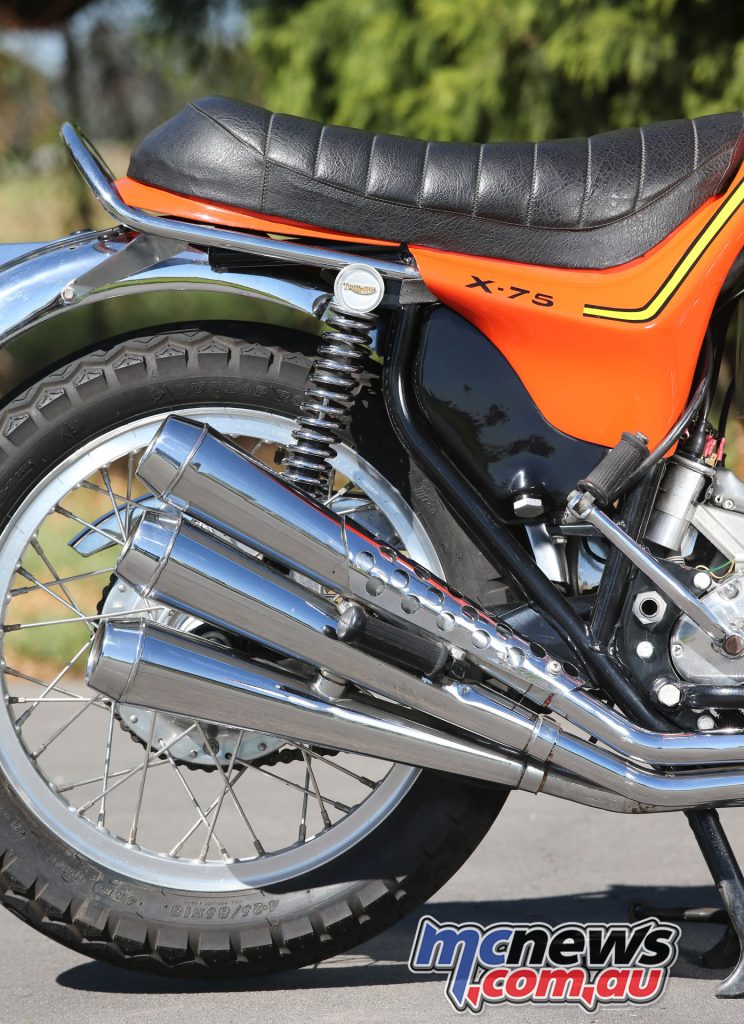
The general specifications were that of the four-speed BSA A75, but some Hurricanes were also based on the five-speed A75V. The dry weight was considerably less than the standard Rocket Three at 202 kg, and although the longer forks increased the wheelbase to 1524 mm, the handling of the Hurricane came in for some criticism.
There was also a problem with the noise from the three-pipe exhaust, these not being able to pass the new 1973 US regulations. Despite offering a top speed of nearly 200 km/h, doubts over the handling, and the high price, meant that many of the limited edition Hurricanes languished in dealers for some time.
The Hurricane was primarily a US market model and production ended in January 1973, with a total of only 1172 built. Now the Hurricane is one of the most coveted BSA/Triumph triples. Vetter’s styling was visionary and few designs have withstood the ravages of time as well as the X75 Hurricane.
1973 Triumph X75 Hurricane Specifications
| 1973 Triumph X75 Hurricane Specifications | |
| Engine | Four-stroke, transverse three-cylinder, pushrod two-valves per cylinder |
| Capacity | 744 cc |
| Bore x Stroke | 67 x 70 mm |
| Compression Ratio | 9.0:1 |
| Induction | Three 27 mm Amal carburettors |
| Starting | Kick |
| Max Power | 44.7 kW / 60 hp @ 7250 rpm |
| Transmission | Five-Speed |
| Final Drive | Chain |
| Front Suspension | Telescopic fork |
| Rear Suspension | Dual shocks preload adjustable |
| Front Brakes | 203 mm Drum |
| Rear Brake | 178 mm Drum |
Check out more historical motorcycle articles by Ian Falloon here (link).























